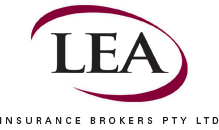
How your Workplace Health and Safety Practices could cost you a Fortune
While good practise and legislation have helped make workplaces immeasurably safer over the years, payouts are still commonplace and it’s important employees remain vigilant given new work health and safety (WHS) risks brought by COVID-19.
Businesses must also consider the disruption that follows an injury or accident, including downtime and the impact on team morale. You may also need to replace or upgrade equipment, revise work and safety practices and bring in temporary staff.
It all adds up, with huge potential costs for employers if they’re not careful – and covered.
The broad scope of health and safety
Firstly, occupational health and safety – better known as OHS – is becoming a dated term.
In an effort to create a unified standard across the country, as well as streamline processes, in 2012 the Australian Government began to implement nationwide Workplace Health and Safety (WHS) Acts and regulations.
As for what these Acts and regulations entail, it depends on the workplace – working on a building site is going to have different expectations than for those who sit behind a desk – as well as the given state or territory.
The coronavirus pandemic has brought with it new WHS duties as stipulated by Safe Work Australia. As Australians begin to return to work, employers are responsible for minimising the risk of exposure to COVID-19 as much as is reasonably practicable.
All businesses must assess any possible risks and implement measures to mitigate them, ensure employees have access to safe equipment, that the workplace has safe arrangements, layouts and systems, and that the business has adequate insurance including any compulsory worker’s compensation insurance.
These aren’t just to mitigate instances of physical injury either, with mental health now coming to the fore – and understandably so, given that $543 million is paid in workers’ compensation for work-related mental health conditions each year. These numbers are expected to grow given the number of psychosocial hazards COVID-19 has introduced to the workplace.
What’s more, businesses not only have to ensure the safety of employees, but also that of “contractors, volunteers, visitors, customers [and] the public.” In short, a business has a duty to ensure their premises/worksites are reasonably safe for people who may enter on the property.
So what makes for a safe environment?
There are four steps in managing work health and safety risks:
- Identify hazards
- Assess risks
- Control risks
- Review controls
These are collaborative steps in which employees, suppliers and other relevant stakeholders should be consulted so as to get the best possible and most relevant perspectives.
What’s more, this is not a ‘set and forget’ system whereby you run the four steps when setting up the business and then leave them as is. WHS is dynamic, with aspects such as new people, new suppliers and contractors, and new processes often making old procedures irrelevant. It’s critical to review on a regular basis, particularly following periods of significant adjustment.
You should also familiarise yourself with your WHS duties to employees and other people in the workplace in respect to coronavirus. These include:
- eliminating or minimising the risk of exposure to COVID-19 as far as is reasonably practicable
- ensuring the work of your business does not put the health and safety of other persons at risk
- maintaining your workplace to ensure the work environment does not put workers or others at risk
- providing your workers with information and training to protect them from the risk of exposure
- consulting with employees on COVID-19 health and safety matters whereby workers are given the opportunity to express their views and/or concerns
A safe workplace has more than just well-documented, formal systems – it has safety ‘baked in’ to the culture. This means that safety is adopted as a way of working.
Discussions regarding health and safety in an informal environment improve the overall standard, while involving employees in the decision-making on these issues can improve employee engagement and contribute to greater workplace safety.
Protect your people – and your business
While the health and safety of everyone at a place of business must be paramount, it’s a sad reality that accidents do happen – and they can lead to payouts in the hundreds of thousands of dollars.
Of course, workplaces can also be found to have breached the Work Health and Safety Act, which generally leads to fines and potential personal liability for Directors – again, in the tens or even hundreds of thousands of dollars.
As a result, ensuring you have the right insurance – both for your business and your employees – is critical. Each state government regulates the workers compensation scheme in that respective state in different ways. It’s important to know how the scheme is administered in your state.
It’s worth noting that workers’ compensation insurance is compulsory for any business that has employees. It can be difficult to determine whether a person is actually an employee or a contractor; if you direct your contractors on how and when they perform their work you should obtain advice from your lawyer or accountant to ensure that you are adequately covered in case they sustain injury or cause accidents. You can also be held legally responsible for the actions of contractors or subcontractors as their principal.
When it comes to situations where WHS issues lead to penalties being levied against the business, statutory liability insurance can help mitigate the cost of fines and penalties, while management liability insurance can keep an individual’s assets safe in case of a significant fine or payout.
Businesses vary in size and nature and a ‘one size fits all’ approach may leave you with uninsured gaps that you will need to fund from your own pocket. So speak to us to get advice on the right insurance for you and your business.
